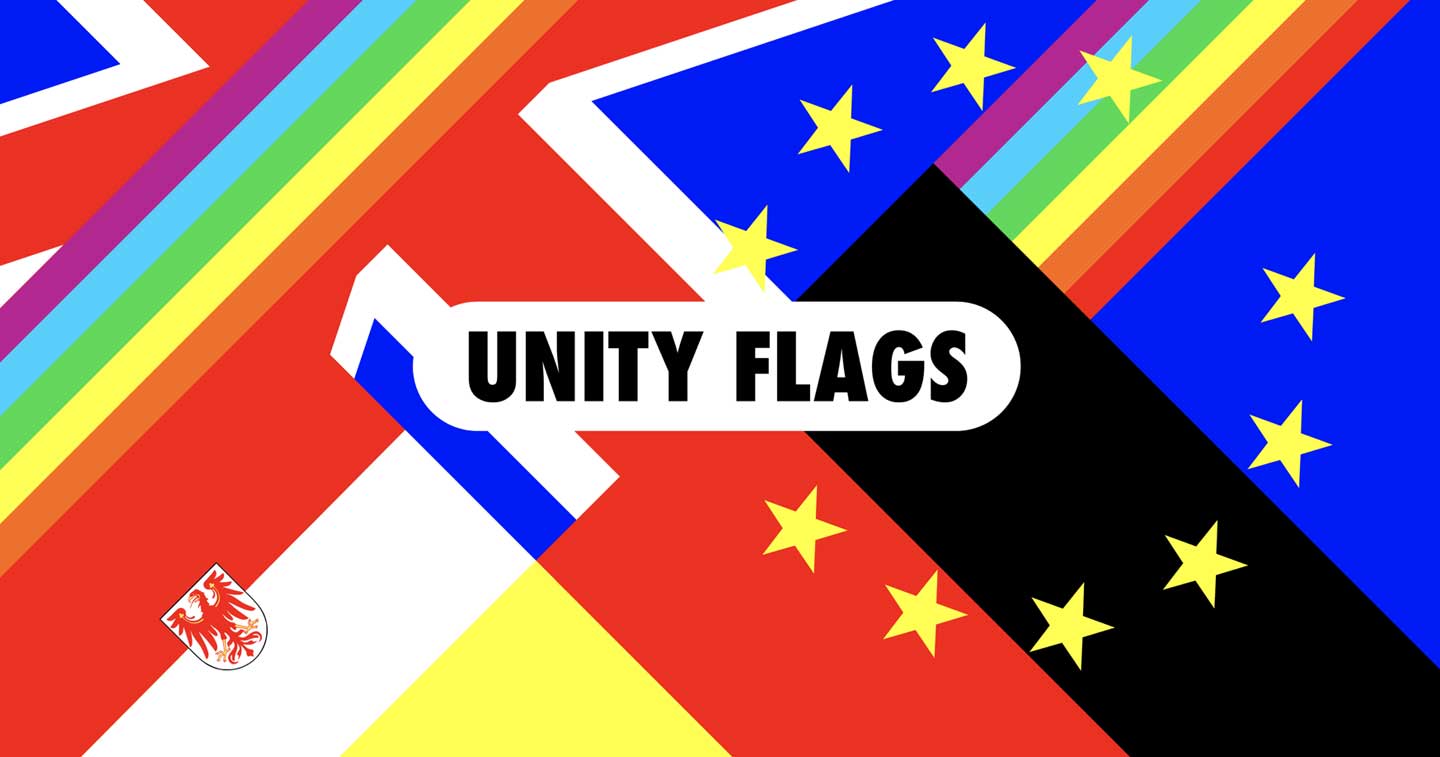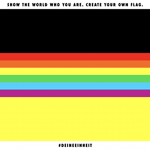BERLIN, GERMANY – Being proud of the German flag in 2020 means reshaping it in the image of the more diverse country it now represents, according to the German Free Democrats parliamentary group. To mark the 30th anniversary of the reunification of East and West Germany, the liberals are reassessing the German flag – by opening it up to reinterpretation by the public. Thus, finding a way to show that today’s Germany is made of thousands of different combinations of values and identities. To demonstrate this, they have worked with creative agency HEIMAT Berlin to launch ‘Unity Flags’.
In the face of threats to national unity – a resurgent nationalist populism, Euroscepticism and intolerance – ‘Unity Flags’ celebrates the achievement not only of reuniting East and West, but also major gains in progressive movements of racial justice, gender equality and religious freedom. The flags represent the vast variety of German values today.
Some of these new flags combine the German tricolour – and flags around the world – with colours representing Black Lives Matter, LGBTQ+ pride, Hinduism, Buddhism and peace. They show that a flag is more than a symbol – it can be a statement flying in the face of injustice and division.
The heart of the campaign is the flag generator, with which the flags of 193 countries can be freely combined with flags of federal states, symbols of gender diversity and religious freedom in a way never seen before. The initiative invites everyone to ‘Show the world who you are. Create your own flag.’ – encouraging new blends of nations, religions and identities. In response, striking examples of user-created flags circulating on social media combine countless national and regional flags with the Star of David, the CND ‘peace symbol’, EU stars, the Black Power raised fist and rainbow colours.
Try it here – fdpbt.de/unityflags
But ultimately this all comes back to Germany’s own unity. Viewed by many as one of the biggest socio-political experiments of recent times, the reunification of East Germany with West Germany happened 30 years ago.
“Undeniably, there is no other European country with more historical baggage related to national pride than Germany. But equally in no other European country is there more scope for an open-minded debate on what nationalism means in today’s society. The strength of this idea is to create a more liberated, open-minded and diverse take on society and its symbol, the flag,” comments Tom Hauser, Executive Creative Director, HEIMAT, the originator of the idea from the creative agency behind the initiative. “It shows the country as a sum of all its parts, every one of which valued equally. This statement celebrates the open-mindedness of modern German society.”
Not everyone has taken to this statement so positively. Predictably, the backlash has been swift and loud, if not profound. “The Bundesflagge is black, red, gold. Deal with it,” reads one response. But its detractors only appear to have generated more buzz for the movement, sparking an open-minded debate on what nationalism means in today’s society. In a country where the voter base for the populist right-wing AfD has increased, many have jumped at the occasion to defend the campaign against its critics. They argue that these flags don’t deny any Germans their identity, but instead offer up an example of unity across political, cultural and religious differences.
Well-known members of the German Free Democrats parliamentary group have joined the movement, participating across social media with their own flags in a show of support. However, the most important take away from this campaign is the enthusiasm with which the German people embraced what really matters on German Unity Day: celebrating the openness, tolerance and diversity that lie at the heart of a new Germany identity.













